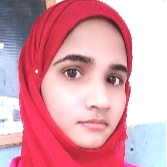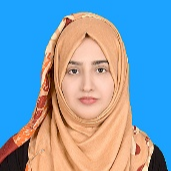International Journal of Information Technology and Computer Science (IJITCS)
IJITCS Vol. 12, No. 6, 8 Dec. 2020
Cover page and Table of Contents: PDF (size: 522KB)
Managing Data Diversity on the Internet of Medical Things (IoMT)
Full Text (PDF, 522KB), PP.49-56
Views: 0 Downloads: 0
Author(s)
Index Terms
Big data, internet of medical things, diversity
Abstract
In the healthcare industry, the Internet of Medical Services (IOMT) plays a vital role throughout the increasing performance, reliability, and efficiency of an electronic device. Healthcare is also characterized as being complicated due to its highly diverse and large number of shareholders. Data diversity refers to the continuum of various types of elements in the data. The integration of data is difficult where different sources can adopt different identification for the same entity, but there is no explicit connection. Researches are contributing to a digitized Health care system through interconnections available medical resources and health care services. This Research presents the contribution of IoT to people in the field of Healthcare, highlighting the issues in different data integration, analysis of the existing algorithms and models, applications, and future challenges of IoT in terms of healthcare medical services. Big data analytics that incorporates millions of fragmented, organized, and unstructured sources of data will play a key role in how health care will be delivered in the future.
Cite This Paper
Iram Mehmood, Sidra Anwar, AneezaDilawar, IsmaZulfiqar, Raja Manzar Abbas, "Managing Data Diversity on the Internet of Medical Things (IoMT)", International Journal of Information Technology and Computer Science(IJITCS), Vol.12, No.6, pp.49-56, 2020. DOI:10.5815/ijitcs.2020.06.05
Reference
[1]Groves, P., Kayyali, B., Knott, D., & Kuiken, S. V. (2016). The'big data' revolution in Healthcare: Accelerating value and innovation.
[2]Chen, C. P., & Zhang, C. Y. (2014). Data-intensive applications, challenges, techniques and technologies: A survey on Big Data. Information sciences, 275, 314-347.
[3]Joyia, G. J., Liaqat, R. M., Farooq, A., & Rehman, S. (2017). Internet of Medical Things (IOMT): applications, benefits and future challenges in healthcare domain. J Commun, 12(4), 240-7.
[4]Taiwo, A. (2019). Big-Data Technology in Finnish Healthcare: Barriers and Possible Ways Out.
[5]Drosou, M., Jagadish, H. V., Pitoura, E., & Stoyanovich, J. (2017). Diversity in big data: A review. Big data, 5(2), 73-84.
[6]Tukkoji, C. D., & Seetharam, K. A Survey on Big Data Traffic Management with the Help of Cloud computing (for Biometric systems).
[7]Wang, Y., Kung, L., & Byrd, T. A. (2018). Big data analytics: Understanding its capabilities and potential benefits for healthcare organizations. Technological Forecasting and Social Change, 126, 3-13.
[8]Erkut, E., Ülküsal, Y., & Yenicerioğlu, O. (1994). A comparison of p-dispersion heuristics. Computers & operations research, 21(10), 1103-1113.
[9]Hilbert, M., & López, P. (2011). The world's technological capacity to store, communicate, and compute information. science, 332(6025), 60-65.
[10]Drosou, M., & Pitoura, E. (2015). Multiple radii disc diversity: Result diversification based on dissimilarity and coverage. ACM Transactions on Database Systems (TODS), 40(1), 1-43.
[11]Riaz, F., Alam, M., & Ali, A. (2017, August). Filtering the big data based on volume, variety and velocity by using Kalman filter recursive approach. In 2017 IEEE 3rd International Conference on Engineering Technologies and Social Sciences (ICETSS) (pp. 1-6). IEEE.
[12]Graham-Rowe, D., Buxton, B., Hayward, V., Pearson, I., Karkkainen, L., Greiner, H., ...& Schillace, S. (2008). Big data: The next Google.
[13]Raghupathi, W., & Raghupathi, V. (2014). Big data analytics in Healthcare: promise and potential. Health information science and systems, 2(1), 3.
[14]Bahrami, M., & Singhal, M. (2015). The role of cloud computing architecture in big data. In Information granularity, big data, and computational intelligence (pp. 275-295). Springer, Cham.
[15]Yu, C., Lakshmanan, L., & Amer-Yahia, S. (2009, March). It takes variety to make a world: diversification in recommender systems. In Proceedings of the 12th international conference on extending database technology: Advances in database technology (pp. 368-378).
[16]Stephanidis, C., & Akoumianakis, D. (2002). Towards a design code of practice for universal access in health telematics. Universal Access in the Information Society, 1(3), 223-226.
[17]Bidaut, L. M., & Scherrer, J. R. (1998). Telematics techniques for image based diagnosis, therapy planning and monitoring. International journal of medical informatics, 52(1-3), 81-91.
[18]Liu, Z., Sun, P., & Chen, Y. (2009). Structured search result differentiation. Proceedings of the VLDB Endowment, 2(1), 313-324.
[19]Grimson, J., Grimson, W., Berry, D., Stephens, G., Felton, E., Kalra, D., ... & Weier, O. W. (1998). A CORBA-based integration of distributed electronic healthcare records using the synapses approach. IEEE Transactions on information technology in biomedicine, 2(3), 124-138.
[20]Pandey, R. V., & Schlötterer, C. (2013). DistMap: a toolkit for distributed short read mapping on a Hadoop cluster. PloS one, 8(8).
[21]Langmead, B., Hansen, K. D., & Leek, J. T. (2010). Cloud-scale RNA-sequencing differential expression analysis with Myrna. Genome biology, 11(8), R83.
[22]Bahrami, M., & Singhal, M. (2015). The role of cloud computing architecture in big data. In Information granularity, big data, and computational intelligence (pp. 275-295). Springer,Cha
[23]Feldman, B., Martin, E. M., & Skotnes, T. (2012). Big data in healthcare hype and hope. Dr. Bonnie, 360, 122-125.
[24]Erkut, E., Ülküsal, Y., & Yenicerioğlu, O. (1994). A comparison of p-dispersion heuristics. Computers & operations research, 21(10), 1103-1113.
[25]Vee, E., Srivastava, U., Shanmugasundaram, J., Bhat, P., & Yahia, S. A. (2008, April). Efficient computation of diverse query results. In 2008 IEEE 24th International Conference on Data Engineering (pp. 228-236). IEEE.
[26]Agrawal, R., Gollapudi, S., Halverson, A., & Ieong, S. (2009, February). Diversifying search results. In Proceedings of the second ACM international conference on web search and data mining (pp. 5-14).
[27]Schatz, M. C. (2009). CloudBurst: highly sensitive read mapping with MapReduce. Bioinformatics, 25(11), 1363-1369.
[28]Mohr, D. C., Burns, M. N., Schueller, S. M., Clarke, G., & Klinkman, M. (2013). Behavioral intervention technologies: evidence review and recommendations for future Research in mental health. General hospital psychiatry, 35(4), 332-338.
[29]Zhu, X., Goldberg, A. B., Van Gael, J., & Andrzejewski, D. (2007, April). Improving diversity in ranking using absorbing random walks. In Human Language Technologies 2007: The Conference of the North American Chapter of the Association for Computational Linguistics; Proceedings of the Main Conference (pp. 97-104).
[30]Zhang, B., Li, H., Liu, Y., Ji, L., Xi, W., Fan, W., ... & Ma, W. Y. (2005, August). Improving web search results using affinity graph. In Proceedings of the 28th annual international ACM SIGIR conference on Research and development in information retrieval (pp. 504-511).
[31]Cox, Michael, and David Ellsworth. "Managing big data for scientific visualization." ACM Siggraph.Vol.97.1997.
[32]Christen, P. (2019). Data linkage: The big picture. Harvard Data Science Review.
[33]Hand, D., & Christen, P. (2018). A note on using the F-measure for evaluating record linkage algorithms. Statistics and Computing, 28(3),539-547.




